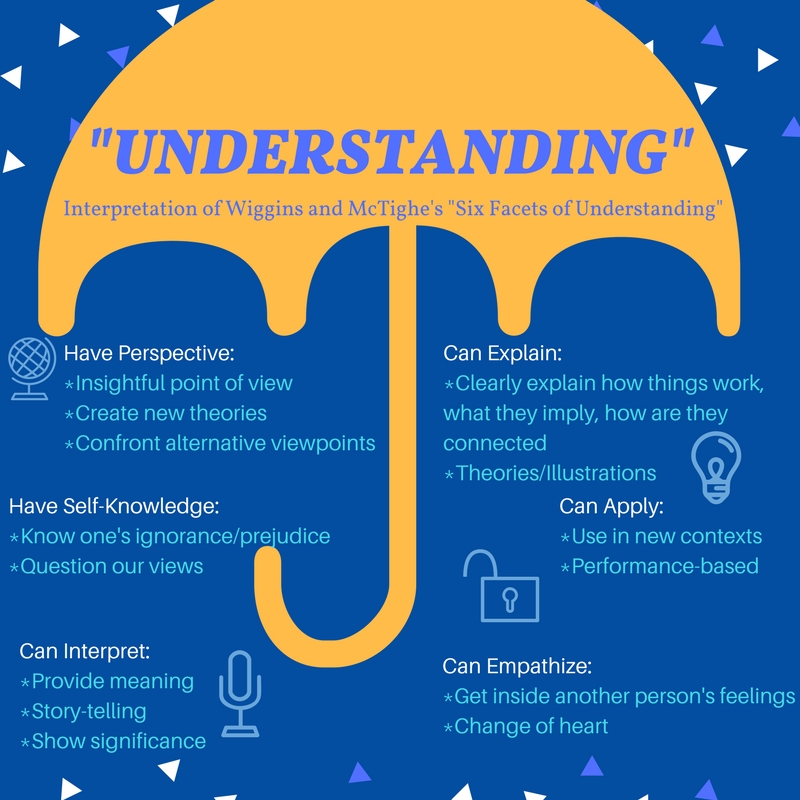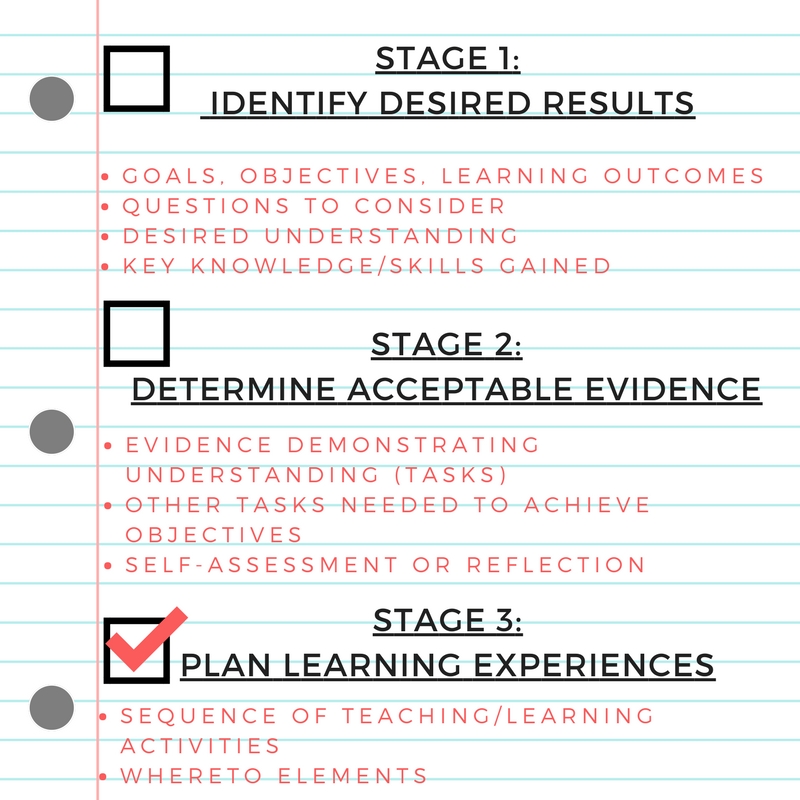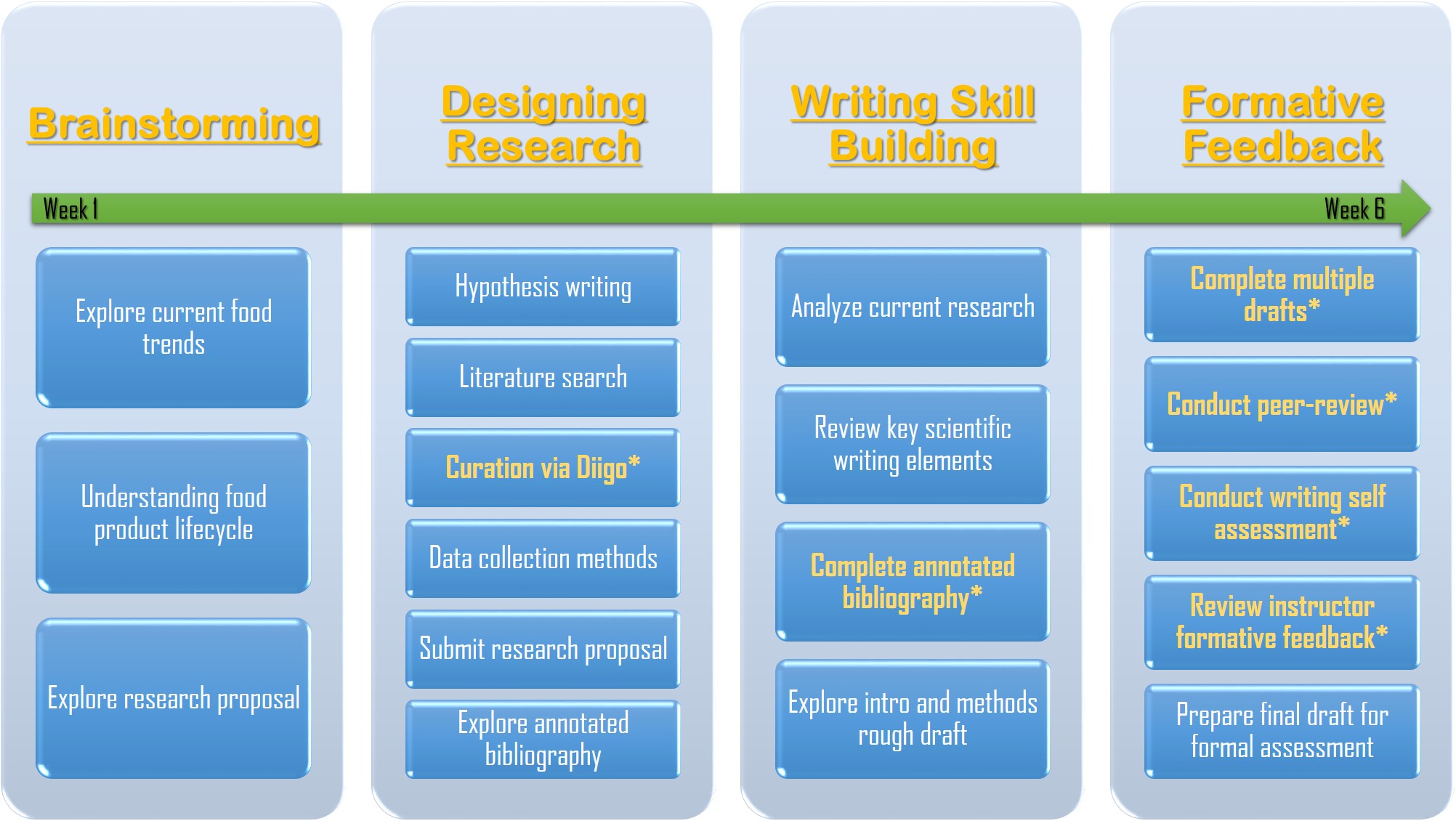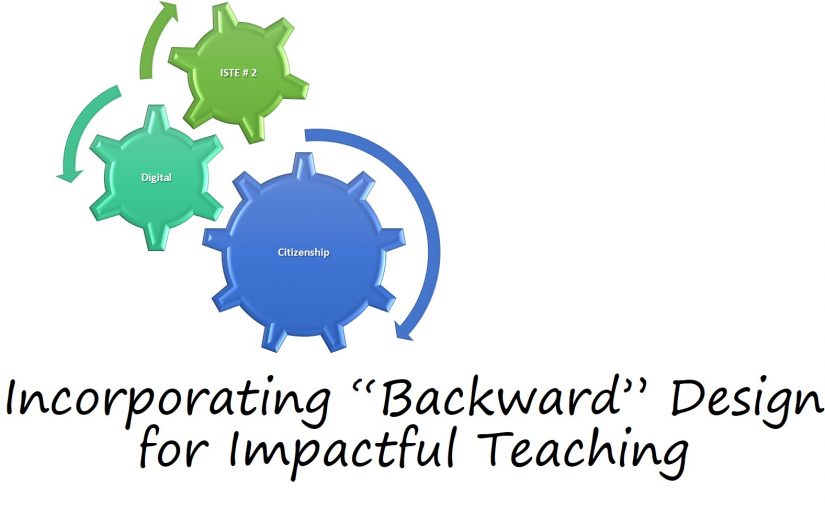For the past ten weeks, my cohort and I have been exploring techniques to get more out of the classes we teach. I have been personally exploring teaching methods that truly achieve student understanding. Interestingly, authors of the book, Understanding by Design, argue that our interpretation of the word “understanding” is narrow and doesn’t encompass the word’s full translation. In my field of higher education, academic application of “understanding” typically means the “ability to explain”. Students who can explain demonstrate their understanding through academic performance such as achieving high test scores or through products such as essays, where they explain how things work, what they imply, and how the concepts are connected, (Wiggins & McTighe, 2005). While this skill is important, we shouldn’t rely solely on explanation to demonstrate whether or not students are understanding, as we could potentially deemphasize the other meanings that hold an equal value, (Wiggins & McTighe, 2005). In fact, there are six facets of understanding which are highlighted in figure 1.1 below.

One of the best practices for accomplishing student understanding (in one or multiple facets) is to lesson plan using the “backward design” approach. In this approach, educators are encouraged to look at their objectives, identify what they want students to learn and accomplish, then design a lesson plan that achieves those goals. This lesson planning begins by first reviewing and refining objectives and/or learning outcomes. By establishing the lesson plan objectives early on, it ensures that the ultimate mission of the class is clearly defined. In other words, the objectives help set the destination of the lesson. This step is followed by developing how these objectives/outcomes will be evaluated, setting the road map for the learning journey. Lastly, the actual plan with the learning activities is designed ensuring that the objectives are appropriately met, this will where the journey begins. Figure 1.2 explores the backward design process from Understanding by Design more in-depth.

Implementing Backward Design
In our case, it wasn’t enough to understand what backward design is through explanation alone, our cohort was challenged to interpret and apply this design method. We were given the option of designing a new lesson that we would use in the future, or choose an existing lesson to improve. I chose to focus on a unit from a project-based class I teach, whose main focus is mastering scientific writing while also developing research skills. The ultimate assessment item of this unit is a final draft of the “Introduction” and “Methodology” sections of the research paper. This assessment focuses on appropriately and expertly incoportating components necessary to set the purpose and procedure of the research project.
Lesson Background. Before reaching this assessment, there are several steps that the students must accomplish. By the time they turn in the final intro and methods draft, the students have already picked their research food (the topic of the research project and paper), created their hypothesis(es), designed their experiment, and are conducting several experiments a week. In order to successfully craft their experiment, they should have prepared a good annotated bibliography, which is the basis for the introductory section of the paper.
In this introductory section, students develop a mini literature review exploring the properties and potential outcomes of their foods. Students understand that they are showcasing the work and results of other researchers, what literature is missing, and how their experiment contributes to the body of literature. The final paragraph introduces their experiment along with their hypothesis(es).
The methodology section of the paper is a brief, yet descriptive, mention of the procedure for producing the research food, its variations (typically students choose 2 variations), and other relevant how-to details of their experiment. The idea behind these few paragraphs is that anyone should be able to pick up their paper and clearly understand how to reproduce their experiment.
The Challenge. Historically, students struggle with the concept of a “final” draft, submitting for formal evaluation something that resembles a paper closer to a first rough draft. Students are then disappointed by their low assessment scores.
From the professor’s perspective, this assignment is frustrating to grade and disappointing to see the low quality effort from students. Despite the fact that students take an entire class dedicated to research writing prior to this class, it is evident that they have not mastered it. In particular, they struggle with the content of these two sections. The two most common comments made in their writing is that some sections have far too much “fluff” or unnecessary explanation while other sections are too vague or lack clarity. They have a hard time writing concisely but descriptively.
From the student’s perspective (based on course evaluations and face-to-face feedback) the assignment is hard, they need more instruction on the writing process, and they have a misunderstanding of what the term “final draft” means. Students always comment that the writing portion is the most frustrating component of the course.
Students are not motivated to practice writing skills on their own though they are encouraged to write several drafts prior to the final draft due date. To help understand what content should be included, students examine examples of scientific writing by identifying the necessary components of the intro and methods sections. Students become very good at identifying these pieces yet still struggle to apply them to their own work. This is likely because most students wait to write their first rough draft the night before the final draft is due, are not familiar with the proper draft writing process, or underestimate the difficulty of scientific writing and do not seek outside assistance.
Revising the lesson. In an effort to resolve frustration from both the professor’s and student perspectives, my mission is to find simple, actionable solutions to address the issues present above. I would like to see students moving away from frustration to feeling challenged and having the intrinsic motivation to practice becoming great scientific writers. One possible solution is making this draft process more collaborative. Since students become very good at identifying necessary components in the works of others, by providing more peer and instructor formative feedback, any clarity issues and missing content would be identified earlier. Students would also be encouraged to review their own work more frequently using the RISE model, addressing the issue of last-minute drafts.
By incorporating more collaboration, this provides an opportunity to focus on building digital citizenship. In particular, I wish to address the ISTE student standard of digital citizenship that “develops safe, legal, and ethical behavior” when using technology by allowing students to write their drafts using a Google Doc collaboration, (ISTE, 2017). Another way to implement this standard is through the curation process leading to the annotated bibliography using the web app, Diigo. A second aspect of the digital citizenship standard I wish to address is “responsibly using and sharing intellectual property”, (ISTE, 2017). Students will encounter this at various aspects of the class as they will rely heavily off of the works of others.
By working backwards to design a solution, I realized that all of the challenges faced by students in writing the final draft was actually pretty easy to overcome once I had all of the right tools and techniques. My solution did involve significant re-arranging of existing helpful class topics, removal of unhelpful topics, and implementation of topics that previous students had identified as missing. Figure 1.3 summarizes the unit lesson planning with the new topics highlighted in bolded, yellow font.

As depicted by Figure 1.3 above, the concept of digital citizenship is introduced through an online literature curation process in which the students collect, organize, and annotate relevant research articles. This new assignment is a spin-off of an existing assessment, annotated bibliography, that allows students not only to cultivate new skills, but provide a helpful tool to better capture information from the articles they read. Students are still required to submit an annotated bibliography but the artifact has been changed to include self-reflection.
The biggest change in this unit is the introduction of the three-step formative feedback process using the RISE model where students undergo peer, self, and instructor feedback. Through this new process, it will help students write multiple drafts prior to the submission of the final draft. Sharing their work and thoughts are made simpler through the use of Google Docs. This new collaboration effort allows students to work together and share their expertise to gain a better understanding of the draft writing process.
Final Thoughts on the Backward Design Process.
Wiggins and McTighe admit that is it difficult to follow this design process step by step without fighting the desire to skip to the next step or write one area with another in mind, (Wiggins & McTighe, 2005). This was the case for me. The objectives and the evaluation criteria were clear as they were based off of accredited standards and those featured elements of scientific writing. The challenge existed in the preparation steps necessary to help students achieve those objectives. However, the most illuminating moment was the emphasis on the evaluation process. By taking a closer look at my unit planning and through considerable reflection, I had realized that there were missing components that were not setting up my students to achieve the desired outcomes. It was like I had the the destination in mind, I knew the road I needed to take but I forgot which vehicle was going to get me there most efficiently. Though I did fight the urge to jump straight into lesson planning, the backward design process helped remind me of what was important for this unit and better equipped me to address the existing problems that I was previously unsure how to solve.
What I’ve also learned to appreciate is that as an educator, you are never quite done with this process. One benefit that I had as I was revising my unit planning was the previous feedback I received from my students. If they hadn’t voiced their frustrations in a constructive way, I wouldn’t have been able to address these issues so specifically. I didn’t need to reinvent the wheel, but rather just fix the small area that was not working. Thanks to their feedback, my design process was streamlined and poignant. As I gear up to implement these changes in the upcoming quarters, I look forward to the improved successes of my students while also being cognisant of the fact that I will, at some point, need to revisit the backward design process and make small yet significant changes again.
References
International Society for Technology in Education, (2017). The ISTE standards for students. Retrieved from: https://www.iste.org/standards/for-students.
Wiggins, G., & McTighe, Jay. (2005). Understanding by design (Expanded 2nd ed., Gale virtual reference library). Alexandria, VA: Association for Supervision and Curriculum Development.
